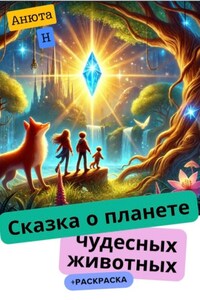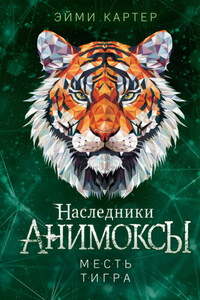Gebekli Tepe has been included in the UNESCO World Heritage List since 2011, and was first discovered in 1963 by archaeologists from Istanbul and Chicago. Later, in 1995, scientists found in these places T-shaped obelisks of the Neolithic era with a height of three to six meters and a weight of 40 to 60 tons, as well as various artifacts, such as figurines in the form of people aged 12 thousand years.
Israeli archaeologists have uncovered one of the main secrets of the oldest temple complex on Earth – in the Turkish Gebekli Tepe. It is proved that it was built 12 thousand years ago with the use of sophisticated technologies for that time. This caused a sharp discussion in the scientific community. Simple silicon tools, cave dwellings and mammoth hunting – these are usually the people of the Stone Age. They knew neither agriculture, nor cattle breeding, nor pottery. But scientists from Israel found out that primitive man did not just erect massive stone objects, but also knew about complex architectural solutions. The complex of huge round stone structures with a diameter of up to 20 meters was built in the Neolithic era. At the edges are monumental t—shaped columns up to five and a half meters high. Each object is based on one idea. Before that, it was believed that people learned to use a single architectural plan only five thousand years ago – Stonehenge is evidence of that.
If you connect the center points of the three largest circles together, you will get an isosceles triangle. In addition, the structures are arranged in a hierarchical order. Previously, scientists believed that the Egyptians were the first to use such techniques when creating the pyramids at Giza.
But now it turns out that this is how representatives of the Natufian culture, common in Lebanon, Syria, Jordan and Israel, built their dugouts. However, the Gebekli Tepe complex in southeastern Turkey is a completely different level.
Since 1994, when excavations began, until the current discovery, the complexity of the structure was explained by the fact that it was built gradually, over two millennia. A new version – the complex was created in one era. Images of lions, bulls, birds, snakes, and spiders are clearly visible on the stone slabs. There are almost no people, only a few figures without faces.
The excavations in Gebekli Tepe, whose age is estimated by historians at 12 thousand years, show us that this is not at all true, that there was an earlier episode of a highly developed civilization. And the founders of the proto-civilization, according to the scientist, were worshipped by people of the Neolithic era. It was for these "forefathers" that, in his opinion, the oldest religious complex in the world was built. The gods were honored here in a very peculiar way. A few years ago, during excavations, fragments of human skulls with notches left by silicon knives were found. Analysis of the remains showed that people died a violent death. According to one version, the dead were not buried – their bodies were eaten by vultures. Such a ritual is known only in one religion – Zoroastrianism, whose followers live in Iran and India.
One of the bas-reliefs has already become a sensation a few years ago. A group of scientists from the University of Edinburgh examined a slab on which a vulture and a scorpion are depicted next to a decapitated human body. Computer analysis has shown that in front of us is nothing but a fragment of the starry sky – the constellations are indicated by symbols in the form of animals. That is, the complex was also an observatory. And apparently, on the stele is not just a map of the starry sky, but evidence of a great catastrophe. Researchers believe that we are talking about the fall of a massive meteorite in about 10,950 BC, which led to a global cooling that lasted about two thousand years. This is also indicated by data obtained from the "climatic chronicle" of the planet, which is "led" by glaciers in Greenland. Apparently, this terrible catastrophe led to the decline of the Neolithic culture under which this complex was built, experts believe.
But what is surprising: for the first two thousand years of its existence, the temple has never been destroyed. And around the eighth millennium BC, it was buried, thanks to which it is well preserved. Why they did it is a big mystery. Perhaps scientists will be able to solve it. At the moment, they have explored only five percent of the huge ritual complex in Gebekli Tepe.
The "Griffin Stone" in Gebekli Tepe, which is a map of the starry sky
A kind of religious and migration center is emerging in the Gebekli Tepe area, which connects the regions of the Middle East with Arabia, Africa, Europe, the Caucasus, and South Asia. The city of Haran, which arose later, mentioned in the Old Testament, is included in this territory. Danish linguist X. Pedersen at one time put forward a hypothesis about the genetic connection of the languages of several major families that were considered unrelated. He called these languages "nostratic" (from the Latin noster – our). Studies of the Soviet linguist V. M. Illich-Svitych showed the scientific validity of combining Indo-European, Semitic-Hamitic, Uralic, Altaic and some languages into a large nostratic macrofamily of languages. This macrofamily was formed in the Upper Paleolithic on the territory of Southwest Asia and adjacent areas. During the retreat of the last Wurm glaciation and climatic warming in the Mesolithic, Nostratic tribes settled over a vast territory of Asia and Europe; they pushed back, and partially assimilated the tribes that lived there earlier. In this historical process, nostratic tribes formed a number of separate areas, where the formation of special language families began. The largest of them, the Indo–European linguistic community began to form first in the region of Central Asia – the archaeological culture of Kelteminar, then on the territory of the Southern Urals, and then in the "Big Steppe" – from the Altai to the Black Sea region. Similar structures exist in Europe, they are called the culture of ring ditches. About 150 similar structures are known to archaeologists in Germany, Austria, Slovakia and the Czech Republic. The diameter of the ditches varies from 20 to 130 meters, all of them belong to the 5th millennium BC. Tools, bones and some other artifacts have been found in their vicinity. The largest of these structures was discovered in Leipzig in the 1990s, and another one near the village of Aitra near Leipzig. According to the findings in the context of circular ditches and associated settlements with a characteristic feature – long houses – it is assumed that they were continuously used for about 200 years until about 4600 BC. The builders of circular ditches are usually associated with the culture of linear-ribbon ceramics. Apparently, they lived in communal longhouses and were engaged in breeding cattle: cattle, sheep, goats and pigs.












